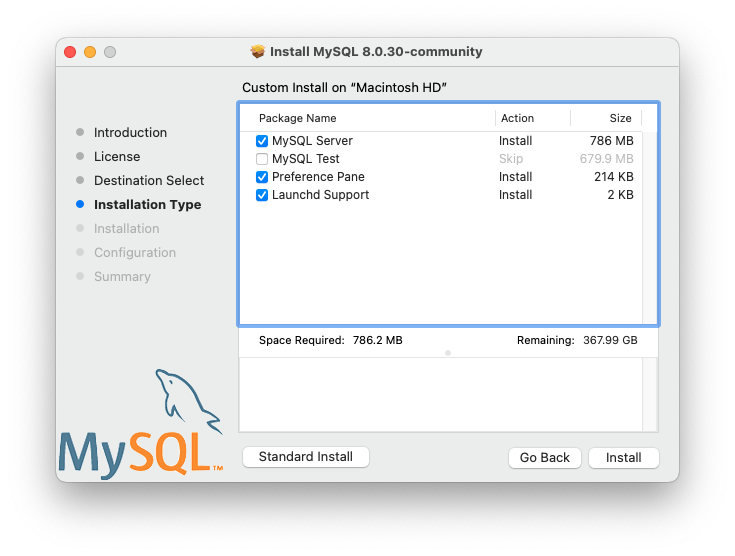2.5.7 Installing MySQL on Linux from the Native Software Repositories
Hello Everybody, I have been using fc3 with MySQl-3.23 for a long time now. I now want to update to MySQL-4.1.14-0. I did the following, 1 I Removed all MySQl components, by unmarking the whole of mysql database options in Application-System Settings-Add Remove Applications. MY oracle server runs on solaris 8 while the machine am tring to install DBD-Oracle runs Suse linux 9(SLE 9) Oracle client library including sqlplus are NFS mount on my suse linux machine from my solaris oracle server but when I run make on.
Debian Perl Dbd Mysql Install Linux Ubuntu
Many Linux distributions include a version of the MySQL server, client tools, and development components in their native software repositories and can be installed with the platforms' standard package management systems. This section provides basic instructions for installing MySQL using those package management systems.
Next I tried to install all the perl modules I need to write Perl scripts to access my mysql database. I started a 'sudo -i' session from which I ran the 'cpanb' command. I successfully used cpan to install the DBI module. However when I attempted to install the DBD::mysql module it failed. The last part of the output was as follows. Hi, I am trying to install perl module DBD::mysql and don't know how to resolve the following: Code. MY oracle server runs on solaris 8 while the machine am tring to install DBD-Oracle runs Suse linux 9(SLE 9) Oracle client library including sqlplus are NFS mount on my suse linux machine from my solaris oracle server but when I run make on.

Native packages are often several versions behind the currently available release. You are also normally unable to install development milestone releases (DMRs), since these are not usually made available in the native repositories. Before proceeding, we recommend that you check out the other installation options described in Section 2.5, “Installing MySQL on Linux”.
Debian Perl Dbd Mysql Install Linux Centos
Distribution specific instructions are shown below:
Debian Perl Dbd Mysql Install Linux Debian
Red Hat Linux, Fedora, CentOS
For a number of Linux distributions, you can install MySQL using the MySQL Yum repository instead of the platform's native software repository. See Section 2.5.1, “Installing MySQL on Linux Using the MySQL Yum Repository” for details.
For Red Hat and similar distributions, the MySQL distribution is divided into a number of separate packages,
mysqlfor the client tools,mysql-serverfor the server and associated tools, andmysql-libsfor the libraries. The libraries are required if you want to provide connectivity from different languages and environments such as Perl, Python and others.To install, use the yum command to specify the packages that you want to install. For example:
MySQL and the MySQL server should now be installed. A sample configuration file is installed into
/etc/my.cnf. To start the MySQL server use systemctl:The database tables are automatically created for you, if they do not already exist. You should, however, run mysql_secure_installation to set the root passwords on your server.
Debian, Ubuntu, Kubuntu
For supported Debian and Ubuntu versions, MySQL can be installed using the MySQL APT Repository instead of the platform's native software repository. See Section 2.5.2, “Installing MySQL on Linux Using the MySQL APT Repository” for details.
On Debian and related distributions, there are two packages for MySQL in their software repositories,
mysql-clientandmysql-server, for the client and server components respectively. You should specify an explicit version, for examplemysql-client-5.1, to ensure that you install the version of MySQL that you want.To download and install, including any dependencies, use the apt-get command, specifying the packages that you want to install.
Before installing, make sure that you update your
apt-getindex files to ensure you are downloading the latest available version.The apt-get command installs a number of packages, including the MySQL server, in order to provide the typical tools and application environment. This can mean that you install a large number of packages in addition to the main MySQL package.
During installation, the initial database is created, and you are prompted for the MySQL root password (and confirmation). A configuration file is created in
/etc/mysql/my.cnf. An init script is created in/etc/init.d/mysql.The server should already be started. You can manually start and stop the server using:
The service is automatically added to the 2, 3 and 4 run levels, with stop scripts in the single, shutdown and restart levels.